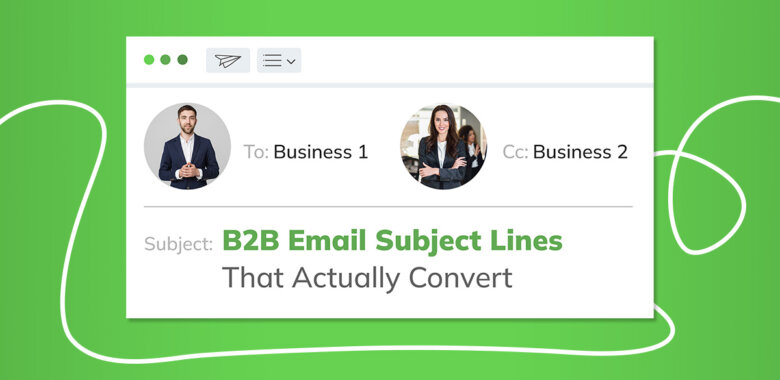2. Spice it up with power words and emotional triggers
Find words that will immediately grab the attention of your audience. When composing your subject lines for outreach emails, keep in mind that you’re writing for a business representative.
People with buying power don’t like to feel like they’re getting tricked or bombarded with irrelevant offers. Instead, try to establish trust and a sense of reliance. Find power words that trigger these emotions. For instance, you could use words like “proven”, “scientific”, or “guaranteed” when suitable.
3. Experiment with formats
Research what kind of subject lines work better with your audience. What makes your receivers open emails — intriguing questions or straightforward statements? Studies show that simple and straightforward subject lines work better — but this may not apply to your audience. It’s always worth testing out.
Aside from that, try adding emojis, joking around, or even leaving the subject line completely empty. See what works with your audience.
4. Don’t experiment blindly — A/B test
How to take the most out of your experiments with formats and power words? A/B tests!
Create two versions of a subject line for one outreach email to test a hypothesis. For instance, you can compare the performance of creative subject lines with simple ones, emojis with no emojis, and personalization with no personalization.
Remember to try only one hypothesis at once. Don’t try emojis, personalization, and creativity all during one A/B test. Instead, run three tests with three different emails. This way, you will be sure which tool works for sure and which doesn’t.
5. Personalize it
Personalization is more than just adding the subscribers’ names in the subject lines. Use other data you have on your recipients to make you subject lines truly tailored:
- Their position in the company — Are you a sales manager? Here are three new tools to boost your performance
- Their goals — You can improve your subject line game in just 3 steps
- Their pain points — How to fix cart abandonment rate with re-engagement emails
The golden rule of personalized subject lines is to match them with the contents of the email carefully. When promising special tailored offers in the subject line — make sure that it’s not just a Christmas sale, but actually a special offer created for your subscribers.






































